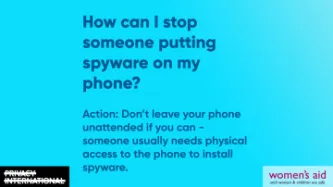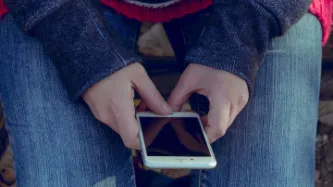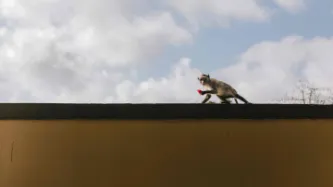Search
Content type: Examples
Indonesian Ministry of Communication and Informatics/KOMINFO official website)
On Thursday, 26 March 2020, the Indonesian Minister of Communication and Informatics, Johnny G. Plate, issued the Ministerial Decree No. 159/2000 to facilitate the cooperation between the Government and telecommunication companies in developing a tracking app called TraceTogether. The app collects 14 days of mobile phone location data from the infected person, and then matches it to location data collected by…
Content type: Examples
The Israeli Ministry of Health's mobile app, "The Shield", is intended to alert users if they have been at a location in Israel at the same time as a known COVID-19 patient.
The app, which is available for both Android and iOS, works by collecting the GPS and WiFi network (SSID) information of a user's mobile device throughout the day. This data is saved only on the mobile device and is not transmitted to the Ministry of Health, other government agencies, or any organisation. The locations…
Content type: Examples
In Jojutla, a municipality in the southern state of Morelos, the government is using drones, normally used for security tasks such as reducing homicides, to surveille gatherings in public parks and plazas and tell people to go home, at the same time distributing hand sanitiser gel and face masks on public roads, in popular neighbourhoods, and on public transport. So far there are no confirmed cases of COVID-19 in Jojutla, and only two confirmed and 23 suspected in the state.
Source: https://…
Content type: Examples
The success of South Korea's efforts to combat the coronavirus without a national lockdown and without suspending civil rights depended in part on preparation put in place after the 2015 MERS epidemic and in part on the country's network of private testing labs, which enabled the country to quickly set up drive-in testing, with the results rapidly texted back to mobile phones. Positive results set in motion aggressive contact-tracing incorporating CCTV footage, mobile phone tracking data, and…
Content type: Examples
A newly-enacted Slovakian law, inspired by similar laws in Singapore, South Korea, and Taiwan, allows the country's Public Health Office to use location data from mobile phones to track people ordered to quarantine to ensure they are not breaking the rules. The angry public response on privacy grounds forced the government to clarify: it will only collect limited data and use it only in connection with the coronavirus outbreak, the data will only be accessible by the Public Health Office; and…
Content type: Examples
Estonia's Government Crisis Commission has instructed the state statistical office, Statistics Estonia, to use mobile geolocation data from companies such as Telia, Elisa, and Tele 2 in order to study people's movements to prevent the spread of COVID-19. Statistics Estonia hoped to launch the project during the week of March 24, 2020. Mart Mägi, the director general of Statistics Estonia, said the intention was to analyse people's movements before and after emergency measures were implemented,…
Content type: Examples
A day after John Tory, the mayor of the City of Toronto, told thousands of attendees at an online event hosted by TechTO that the city was gathering cellphone location data from telecoms in order to identify areas where residents were still congregating despite the city's social distancing rules, he withdrew the claim. City staff explained that an offer had been made to share anonymous cellphone location data with the City and it had been passed along to Toronto Public Health and the Emergency…
Content type: Examples
The Rio de Janeiro City Hall has signed an agreement with telecomunications company TIM to use geolocation data to develop "heat maps" by cross-referencing epidemological hubs with high population density locations. Under the agreement, TIM will pinpoint the movement of its users across Rio de Janeiro through antennae-facilitated geolocation triangulation and send it online to the local government to enable it to monitor whether individuals are complying with isolation measures and assess…
Content type: Case Study
The right to privacy is crucial to protect a couple’s equal rights within marriage.
The recent rise of spyware as an “off-the-shelf” product that anyone can purchase has been extremely worrying, as installing spyware on someone else’s phone means getting access to their contacts, their messages, their google searches, their location and more - all without them knowing.
Spyware is, increasingly, becoming another way for abusive spouses to control and monitor their partners. Nearly a third of…
Content type: Explainer
In a scramble to track, and thereby stem the flow of, new cases of Covid-19, Governments around the world are rushing to track the locations of their populace. One way to do this is to write a smartphone app which uses Bluetooth technology, and encourage (or mandate) that individuals download and use the app. We have seen such examples in Singapore and emerging plans in the UK.
Apps that use Bluetooth are just one way to track location. There are several different technologies in a smartphone…
Content type: Case Study
In Peru, you get asked for your fingerprint and your ID constantly - when you’re getting a new phone line installed or depositing money in your bank account – and every Peruvian person has an ID card, and is included in the National Registry of Identity – a huge database designed to prove that everyone is who they say they are. After all, you can change your name, but not your fingerprint.
However, in 2019 the National Police of Peru uncovered a criminal operation that was doing just that:…
Content type: Examples
Together with Norwegian company Simula the Norwegian Institute of Public Health is developping a voluntary app to track users geolocation and slow the spread of Covid-19. Running in the background, the app will collect GPS and Bluetooth location data and store them on a server for 30 days. If a user is diagnosed with the virus, its location data can be user to trace all the phones that have been in close contact with the person. Authorities will use this data to send an SMS only to those phones…
Content type: Examples
In response to a case brought by the Legal Center for Arab Minority Rights in Israel (Adalah), the Arab Joint List, and the Association for Civil Rights in Israel, the Israeli Supreme Court issued a temporary injunction on March 19 limiting the the state's and the Shin Bet security service's use of cellphone surveillance, among others, to track and monitor COVID-19 patients and trace their contacts. The court indicated it will ban the programme unless a parliament oversight committee is…
Content type: Examples
The Romanian government has formally notified the Council of Europe under Article 15, paragraph 3 of the ECHR of the country's state of emergency decree, noting that some of the measures being taken involve derogations from the obligations under the Convention.
Source: https://rm.coe.int/09000016809cee30
Writer: Permanent Representation of Romania
Publication: Official letter
Content type: Examples
On March 14, Romanian president Klaus Iohannis announced a state of emergency to make it possible to allocate new resources for crisis management, and urged the public to follow isolation guidelines and hygiene rules. The Parliament must approve within five days, and the state of emergency lasts 30 days. The decree allows the government to carry out checks on persons and places, order temporary closures of shops and other public places, halt the distribution of publications or broadcasts, and…
Content type: Examples
Aided by its small size, Singapore's contact tracing efforts were a key element of controlling the virus's spread; detectives used CCTV footage to locate the contacts of more than 6,000 people. Singapore also contacts individuals required to self-isolate several times a day and requires them to send photographic proof of their location. Breaking quarantine attracts substantial penalties, including jail terms, and in one case stripped an offender of his residency rights. Singapore also quickly…
Content type: Examples
To contain the coronavirus, Vietnam focused on aggressive contact tracing, forced quarantines for all people arriving in the country, cancelling all foreign flights, conscripting medical students and retired doctors and nurses, instituting surveillance, and mobilising medical and military personnel as well as its national network of informants. As of March 24, the country had reported 123 confirmed cases and no deaths; as of March 20 the country had tested 15,637 people. About 800 people have…
Content type: Examples
Taiwan, linked by direct flights to Wuhan, moved to contain the virus as soon as reports of the Wuhan outbreak emerged. At the end of January, it suspended flights from China, and integrated its national health database with its immigration and customs information in order to trace potential cases. This enabled the country to send text messages to every phone on the island listing every restaurant, tourist site, and destination passengers on the Diamond Princess cruise ship visited during shore…
Content type: Examples
The new Singaporean app, TraceTogether, developed by the Government Technology Agency in collaboration with the Ministry of Health was launched on March 20 after eight weeks of development. The app, which can be downloaded by anyone with a Singapore mobile number and a Bluetooth-enabled smartphone, asks users to turn on Bluetooth and location services, and enable push notifications. The app works by exchanging short-distance Bluetooth signals between phones to detect other users within two…
Content type: Examples
Russian prime minister Mikhail Mishustin has ordered the country's Communications Ministry to develop a system, to be built on analysing specific individuals' geolocation data from telecommunications companies that can track people who have come into contact with those who have tested positive for the novel coronavirus. The data will also be passed to regional-level task forces fighting the virus's spread; officials are also tasked with finding a way to notify those who may have come into…
Content type: Examples
On March 14, the Peruvian government set up a website for individuals to check their symptoms so they can be directed towards sources of help. The web form asks for ID number, phone, email and home address.
Source: https://www.gob.pe/coronavirus
Writer: Peruvian government
Publication: Peruvian government
Content type: Examples
Under a new protocol, international passengers arriving at Lime's Jorge Chavez International Airport or by ship at Callao Port, is referred to medical staff if they are arriving from places with confirmed cases, even if they are asymptomatic. Passengers who show symptoms in transit are transferred to isolation areas, where they receive care. The passengers are also required to supply personal information so they can be surveilled over the following days.
Source: https://andina.pe/ingles/…
Content type: Examples
After Pakistani residents queried whether messages labelled "CoronaALERT" sent out via SMS were legitimate, telecom authorities confirmed that it was authentic, being sent to selected individuals at the request of the Ministry of Health under the Digital Parkistan programme. Individuals were chosen because they might have come in contact with infected individuals during travel or in specific locations. It is not clear, however, what the criteria were for selecting individuals at risk,…
Content type: Examples
To counter the many rumours, fake news, and hoaxes spreading in Myanmar, the country's Ministry of Health and Sports launched a website in collaboration with state and regional governments with videos about the virus, the latest data, and updates on the latest number of cases and lab results in order to raise awareness on how both medical staff and the public and stay safe. The agency share information and collaborates with the Ministry of Transport and Communications to "track down people…
Content type: Examples
Malaysia will use both government-owned drones and drones borrowed from local industries under the direction of the armed forces and on-the-ground police to monitor compliance with the Movement Control Order. Because Malaysia doesn't have enough drones to cover the whole country, they will be focused on 12 hotspots where people resist compliance.
Source:
https://www.commercialdroneprofessional.com/coronavirus-malaysia-to-use-drones-to-control-public-movement/
https://www.malaymail.com/…
Content type: Examples
The Indonesian Doctors Association has asked the government to open up the identity of patients who have tested positive for the novel coronavirus in order to facilitate contact tracing and improve the efficiency of efforts to prevent further spread, arguing that in an emergency like this the public will support the disclosure in the interests of safety.
Source: https://mediaindonesia.com/read/detail/296992-permudah-kontak-tracing-idi-dorong-pemerintah-buka-data-pasien
Writer: Atalya…
Content type: Examples
The first two confirmed cases of COVID-19 in Indonesia and their neighbours became the targets of media coverage and social media abuse after their personal details were spread via WhatsApp and other social media soon after the President announced the positive tests results - before anyone told the patients themselves. The Health Ministry denied responsibility for the data breach.
Sources:
https://www.thejakartapost.com/news/2020/03/04/covid-19-patients-become-victims-of-indonesias-lack-of-…
Content type: Examples
Technology such as Hong Kong's electronic monitoring bracelets, used to ensure that people do not break their mandated quarantine, may appear reasonable during a pandemic, but could be problematic if deployed widely and used to identify those who have joined anti-government protests. The same applies to emergency legislation such as that passed by the UK government granting the government extraordinary new powers to shut down airports and ban gatherings. History provides examples:…
Content type: Examples
The Hong Kong Department of Health has asked the police to deploy its computerised Major Incident Investigation and Disaster Support System in order to trace the contacts of patients infected by the novel coronavirus. The request for the system, which was used during the SARS epidemic in 2003, came after 59 police officers were placed under quarantine after a 48-year-old officer they had partied with tested positive.
Source: https://www.chinadaily.com.cn/a/202002/22/…
Content type: Examples
At the MIT Media lab, Ramesh Raskar is leading a team that includes software engineers at companies such as Facebook and Uber to develop the free and open source app Private Kit: Safe Paths. The app is intended to share encrypted information between phones in the network without going through a central authority so that individuals can see if they've come in contact with someone carrying the coronavirus. Anyone who tests positive can choose to share location data with health officials, who can…


